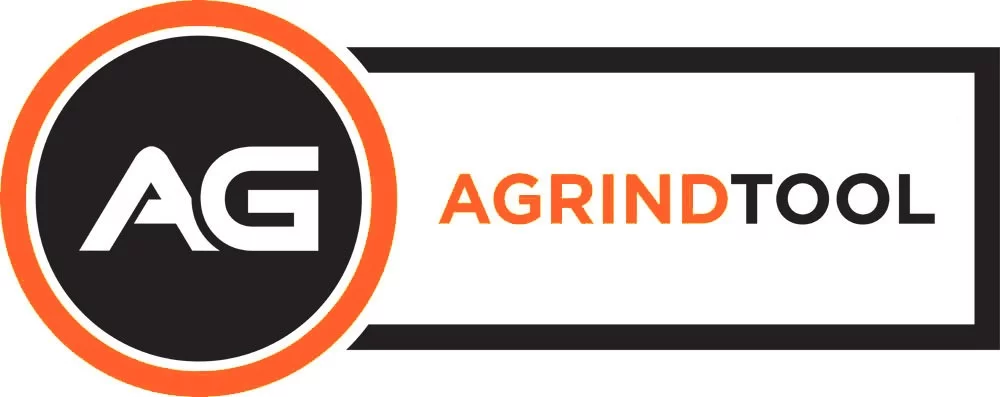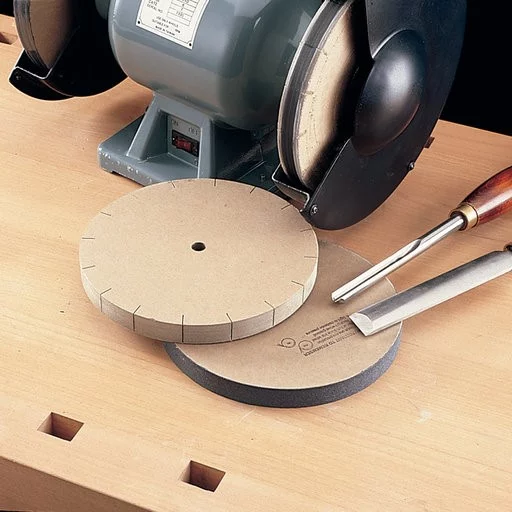Grinding wheels are precision tools designed with abrasive grains that are held by a bonding material. These wheels are attached to a bench grinder made to perform significant operations such as knife repair and woodworking.
There are numerous tools you can use to sharpen your knife. The two common types are a grinding wheel and a stone (whetstone). Grinding wheels for sharpening knives function at high speed to work effectively when trimming off wood, plastic, and metal or sharpening blade edges. Besides, instead of getting a new knife, grinding wheels can make the one you already have sharp without spending much.
Grinding Wheels for Sharpening Knives
Grinders are effective tools ideal when it comes to sharpening a knife. They are designed to work with grinding wheels to make grinding operations more straightforward and easier compared to a hand-powered method, such as the use of a whetstone. This is because the wheel handles the difficult part of the task. In fact, the wheel produces more spinning power than what an ordinary hand can generate.
Nonetheless, some precautions must be taken when using grinders. This is because they spin at high speeds, which can cause overheating on the metal in the blade and make it brittle and susceptible to cracking. So, operators who prefer using grinders with variable speed can control the speed and minimize the heat buildup. Besides, it’s advisable to keep cool water around for cooling.
Due to how the wheel works, it is capable of removing material very quickly from the blade. With this, there is a tendency to take off more than it’s required if care is not taken, affecting the service life of the knife.
Furthermore, it’s crucial that the knife is held against the grinding wheel at an accurate angle of around 45° when using a grinder. There won’t be a need to move the blade of the knife around to do the job when the wheel is spinning fast. All you need to do is follow the shape of the knife until you get the required sharpness. The recommended way to get a very sharp knife is to use a sharpening wheel that is made specifically for the operation.
Why Should Knives Be Sharpened?
When the blade of a knife is sharp, it’s always important to be careful while using it. But a dull one is more dangerous because users need to put in more effort when cutting through a material, and during this process, you may end up cutting yourself. Nevertheless, if the blade is well-sharpened, users will feel comfortable while using the knife on materials such as wood, rope, or even food.
How frequently you use your knife will determine how often it will need to be sharpened. There are blades designed with harder steel, making them capable of retaining sharpness for an extended period of time. But naturally, after using a knife for some time, its sharpness will reduce.
So, a knife may need to be sharpened several times per year based on how often it’s needed. In this sense, sharpening provides the knife with a new edge by getting rid of some material on the surface. Nonetheless, you must ensure that you use honing steel several times every week to align the edge to sustain the effectiveness of the blade.
Tips for Getting a Perfectly Sharpened Edge on a Blade with a Bench Grinder
Is your work more of knife repair or woodworking? A bench grinder will obviously be an indispensable tool. This grinder features a wheel designed to spin at high speed–trimming pieces of wood, metal, or plastic and sharpening different kinds of blades.
A bench grinder is often used by a lot of professional knife sharpeners to employ their craft. Besides, it’s impressively cost-effective to sharpen a knife blade than purchase a new one. This can be a great advantage to professional chefs that use knives with thousands of dollar price tags.
Check out below some significant tips you should know to get an ideal sharpened edge on your blade when using a bench grinder:
- Avoid Using a Vice: The gut reaction to make use of vice may be tempting because of the high rate of a bench grinder speed. With the vice, operators can have the blade in one place during the grinding process. However, this should be avoided due to how sharpening a blade is completely not a linear process. It is expected that the blade moves with the wheel naturally to achieve a proper edge.
- Maintain a Proper Angle: It’s wrong to have your blade flat on the grinding wheel. Sharpening your blade while its side is flushed against the grinder is a mistake that should be avoided. This is because it will only shine up the blade and never give the perfect sharpness that is expected.
So it’s advisable to ensure that the blade is rightly angled toward the wheel to get a sharp edge. The recommended ideal angle during the sharpening process is usually 45 degrees.
- Follow the Natural Curve of the Blade: Many knives feature a blade with a curvature form. This natural curve of the blade should be followed when using the grinder. Automatically, the wheel pulls the blade along with the movement during sharpening.
Follow this natural movement. And as you hold the blade in the wheel, ensure it’s not in one place– follow the direction of the wheel – move as the grinding wheel moves the blade. But you should make sure that the natural friction of the wheel and the blade is maintained. All you need to do is control it by moving the blade along with the wheel timely and evenly. With this, you can have a well-sharpened blade.
- Leave the Work for the Bench Grinder: Several operators of the bench grinder may want to put a lot of effort into letting the grinder sharpens the blade. But this doesn’t seem right as it can make the blade chip, and you end up losing control of the blade.
It would be best to understand that the wheel does not need your help as it’s spinning fast. Your responsibility is to ensure that the blade is set well on the wheel at an accurate angle and allow it to work along the natural curvature.
What is the Best Grinding Wheel for Sharpening Knives?
You must know your future sharpening needs before purchasing the knife sharpening tool. Some of the essential questions you should ask yourself include will you be using different angles to sharpen a range of tools, do you need the finest surface finish, and are you in need of several features in a grinding wheel? Appropriate answers to these questions will help you make a great choice of the best wheel.
So what is the best grinding wheel for sharpening knives? In this piece, we will make paper-sharpening wheels for knives our preferred option.
About Paper Sharpening Wheels for Knives
Using paper sharpening wheels is a swift process to sharpen knives. It does not take time, as the process of turning a dull knife into a sharp one is around one minute.
Paper sharpening wheels are perfect for various blades such as gouges, carving tools, scissors, and knives. They come with two laminated paper grinding wheels, which are capable of offering blades with an excellent polished edge.
These wheels are perfect for several standard bench grinders with a half-inch arbor, which can use 6-inch diameter wheels. Besides, paper sharpening wheels for knives are excellent when used with high-speed motors of 3450 to 3600 rpm.
Conclusion
It’s good to know how more cost-effective it is to sharpen knives using grinding wheels than purchasing new ones. Besides, a grinding wheel for sharpening knives will help make a sharp knife to be at your disposal anytime you notice that it’s becoming dull and that much effort is required when using it. Moreover, you shouldn’t forget the place of caring for the wheel. With good maintenance, you will always enjoy a very sharp knife that can increase your work efficiency.

